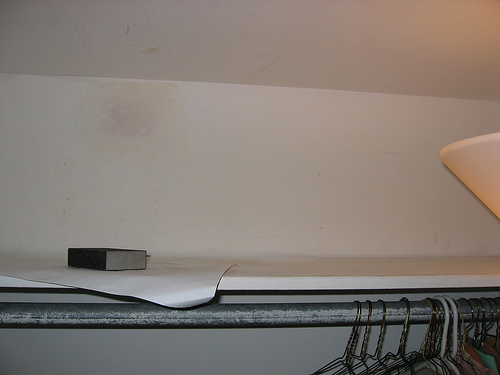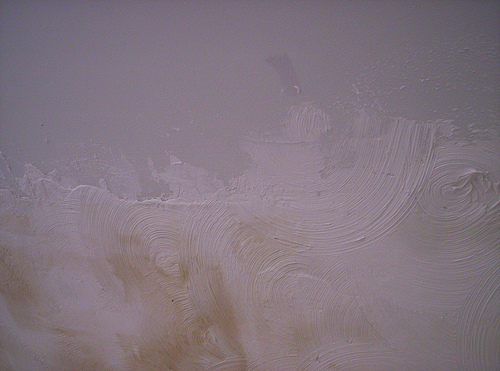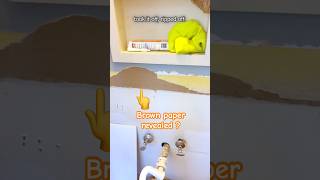[post_name drywall tools Drywall Finishing and Critical Lighting Problems

Nowadays screws are considered much better for affixing drywall, yet there are still places where nails are mostly made use of. This article defines exactly what you can do to deal with the issue when nails begin to bulge of the surface.The most usual locations to discover popped nails are along the bordered of ceilings on outside wall surfaces. The factor is that temperature level distinctions often tend to turn materials no matter of whether it's steel or timber. Also, condensation on the top of nails can lead to discoloring of the material made use of to cover them and sometimes it will even fall off completely.In other situations nails could stand out if your home has actually worked out somewhat with time. Houses can sometimes resolve also fast and excessive, and if you believe this may be the case with your house it's a great idea to talk with a residence examiner and have that person check it out and also see if they could see just what the problem is. Undoubtedly, if there is an architectural problem in your home, it really does not make much feeling to deal with cosmetic concerns such as popped nails.Merely tapping a popped nail right into the wood again won't repair the issue. The reason the nail popped in the first
area won't disappear and it's just a matter of time prior to the nail pops right back out once more. Commonly, the nail hole has actually increased and also you need something to keep the nail securely protected. Usually, the most effective way is by utilizing another nail.This is the best ways to do it: point the new nail at the wood behind the drywall as well as own it in alongside the old nail. Make certain the new nail overlaps the top of the other nail and drive the nail till it develops a small dimple. Examine to see that the nail has actually been owned in sufficiently by dragging an inflexible things throughout the surface area( it could be anything truly-a ruler, a putty knife, as long as it's rigid). If the nails hasn't been driven in far enough you'll really feel a pull and the nail must be owned in further up until there's no resistance.With today's color-changing filler it has actually ended up being really easy to fill out the dimple that you made
. Intense pink is a preferred selection as it alters to white when it dries out. You most likely won't need even more compared to a number of layers, perhaps three, with simply a light and also fast sanding between applications.Of program, you might opt to utilize a screw beside the old nail as well as if you intend to enter this instructions see to it to
countersink the screw enough that the nail becomes hidden listed below the surface area. Besides that the actions are the exact same as currently explained.
How to Repair a Large Hole in a Sheetrock Wall
For little burrow to approximately & frac12;" you can merely use spackling compound and also a putty blade. Use the spackle, wait until it dries after that sand smooth. Spackling compound will reduce a little bit so occasionally you will should use a second layer after the first layer dries out, you will then have to sand it once more before retouching the paint.For tool
holes 1/2" to 3" you will need to obtain a drywall patch (there are different other methods to repair a hole this size however a drywall patch set is the simplest). Many of these sets come with a spot that is self adhesive. Simply cut the patch so that it is larger than the dimension of the hole by regarding 1" and also stick it over the opening (some sets actually enable you to stick the patch with the opening after that draw it tight behind the back of the opening enabling you to fill out simply the opening).
Then you will certainly need drywall compound (which can be found in smaller sized containers than a gallon) or spackling substance. Making use of a wide blade putty knife (3" or bigger), use the substance over the spot and also a number of inches surrounding the hole, then after it dries out, sand it smooth. You will should repeat this action a few times till you can no more see where the patch is, fining sand after each layer dries. Ultimately, repair the paint.For bigger
openings 3" and also larger it is normally best to replace a section of the drywall. Discover where the closest stud is, then eliminated a rectangle around the hole including fifty percent of the width of the stud. Then, making use of the eliminated piece as a design template cut a fresh item of drywall to fit the opening. Place the drywall in the hole and also use drywall screws to attach it to the stud. (It is even much better if you reduced out an item that is large sufficient to expose half of 2 studs to make sure that the drywall is also stronger in place. Studs are normally placed 18" apart yet might be anywhere in between 12" to 24" apart.)
Using you "mudding knife" (or large putty knife), use a slim layer of drywall mud to cover the whole joint. Next, use paper drywall tape over the mud as well as utilizing your blade, installed the paper firmly into the mud, removing any kind of excess mud. Hereafter dries use another 2 to 3 coats of drywall mud over the joint tape extending about 6" on either side of the joint, fining sand in between each coat. Once the fixing job is smooth you can repair the paint.

Drywall Mudding and Taping - A Simple Process For Do-It-Yourself Homeowners
Drywall repair Lake Mary - drywall mud
